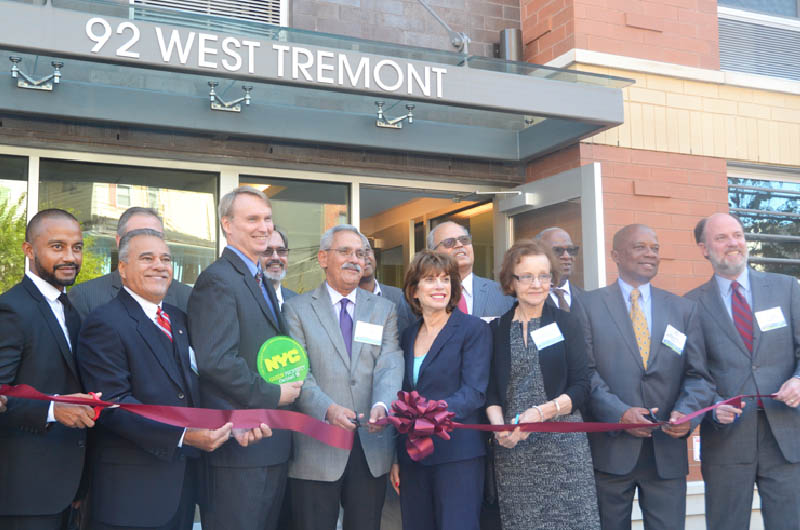
 OER Community311
OER Community311 Search all NYC.gov websites
Search all NYC.gov websites
Case Study 23
Case Study 23
OER Assists an Affordable Development in the Bronx

Background
Acacia Network, a non-profit provider of comprehensive social services in the Bronx, recently offered 61 new affordable apartments to seniors in the Morris Heights neighborhood. The joyous celebration at the project’s ribbon-cutting masked the fact that the development of the steeply sloped, vacant site at 92 West Tremont Avenue took nearly six years to complete – about twice the length of comparable projects – due to the site’s complex soil contamination. Acacia’s development arm, Promesa, Inc., met with the New York City Office of Environmental Remediation (OER) in the fall of 2010 to discuss how to remediate the site which its state funders had insisted be cleaned up before housing was built. Over the next five years, OER repeatedly presented the affordable development at 92 West Tremont to state and city regulators to build consensus around a cleanup plan, determine what agency would oversee the project and assist Promesa in sharply reducing the cleanup’s cost.Strategy
Because a review of the site’s history showed that a dry cleaner had once operated on the property, OER worked with Promesa to investigate the site. The results revealed PCE, a chemical used by dry cleaners, in the site’s soil, groundwater and soil vapor. OER approached the New York State Department of Environmental Conservation (DEC) in early 2011 to share the investigation results and ask if DEC would require further sampling. DEC told OER that Acacia would need to conduct additional tests along three sides of its property, including beneath a sidewalk across the street, to determine if PCE in soil gas was reaching adjacent apartment buildings.To help Acacia drill through a city sidewalk, OER presented the affordable housing project and its need for a sidewalk permit to the New York City Department of Transportation (DOT). With DOT’s approval, Acacia’s environmental team then sampled the area. The results showed PCE in soil gas at far higher levels beneath the sidewalk than within the source area on Promesa’s property. OER shared these results with DEC with a proposed remedy of excavation of all PCE-impacted soil and installation of a soil gas depressurization system. DEC determined the proposed remedy would work and Promesa could clean-up the property in the city Voluntary Cleanup Program, a land cleanup program that OER manages.
In early 2012, Promesa, however, changed course. It applied 92 West Tremont to the New York State Brownfield Cleanup Program to take advantage of the lucrative state tax credits that the state program offers. After reviewing its application, DEC, however, rejected Promesa’s application because of insufficient soil contamination. Despite high soil vapor concentrations on the property’s boundary, the level of PCE in soil was relatively low. With no other option to satisfy its state lender, Promesa returned to OER to enroll 92 West Tremont in the city cleanup program. OER informed DEC of Acacia’s decision in May 2013, and once again, DEC agreed that OER could manage the site’s cleanup in the city program.
Excavation of 92 West Tremont began in September 2013. The project, however, soon encountered another challenge. Because PCE is a federally regulated hazardous waste, DEC requires all PCE-contaminated soil to be removed from a site, regardless of actual soil concentrations, and to be disposed of as hazardous waste. This disposal costs about $300 per ton. The expense of removing 2,000 tons of PCE soils, as required for the site remedy – would threaten the project’s financial stability. To assist Promesa, OER then contacted a separate DEC office for a “contained in” determination. The determination would mean that if actual PCE levels in soil were below 1 part per million, DEC would allow the PCE soil to be disposed of as a regulated waste at a cost of $80 per ton. Impact Environmental, Promesa’s environmental consultant, made the showing. As a result, DEC’s “contained in” determination saved the project approximately $440,000.


